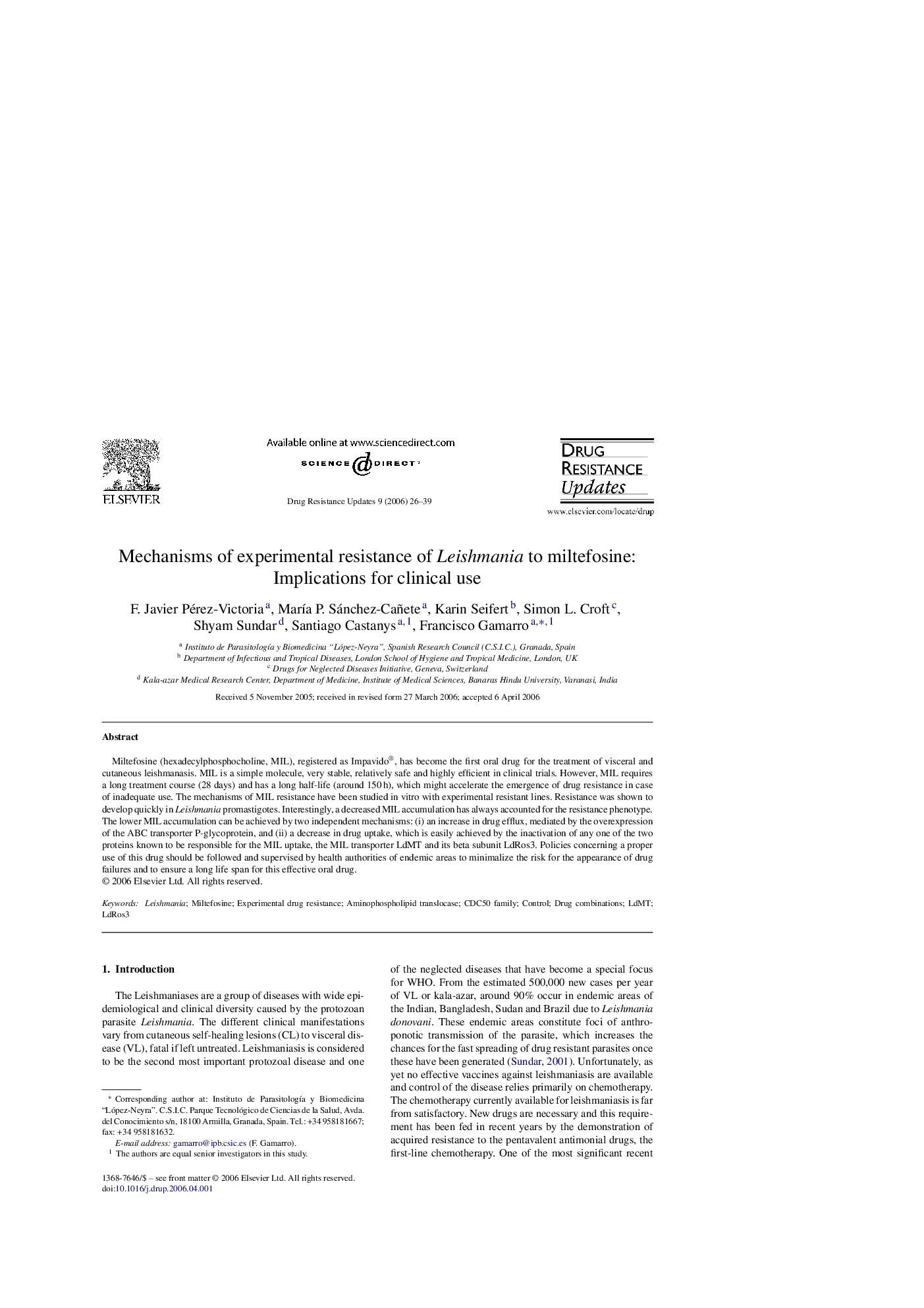| کد مقاله | کد نشریه | سال انتشار | مقاله انگلیسی | نسخه تمام متن |
|---|---|---|---|---|
| 2120589 | 1546862 | 2006 | 14 صفحه PDF | دانلود رایگان |

Miltefosine (hexadecylphosphocholine, MIL), registered as Impavido®, has become the first oral drug for the treatment of visceral and cutaneous leishmanasis. MIL is a simple molecule, very stable, relatively safe and highly efficient in clinical trials. However, MIL requires a long treatment course (28 days) and has a long half-life (around 150 h), which might accelerate the emergence of drug resistance in case of inadequate use. The mechanisms of MIL resistance have been studied in vitro with experimental resistant lines. Resistance was shown to develop quickly in Leishmania promastigotes. Interestingly, a decreased MIL accumulation has always accounted for the resistance phenotype. The lower MIL accumulation can be achieved by two independent mechanisms: (i) an increase in drug efflux, mediated by the overexpression of the ABC transporter P-glycoprotein, and (ii) a decrease in drug uptake, which is easily achieved by the inactivation of any one of the two proteins known to be responsible for the MIL uptake, the MIL transporter LdMT and its beta subunit LdRos3. Policies concerning a proper use of this drug should be followed and supervised by health authorities of endemic areas to minimalize the risk for the appearance of drug failures and to ensure a long life span for this effective oral drug.
Journal: Drug Resistance Updates - Volume 9, Issues 1–2, February–April 2006, Pages 26–39